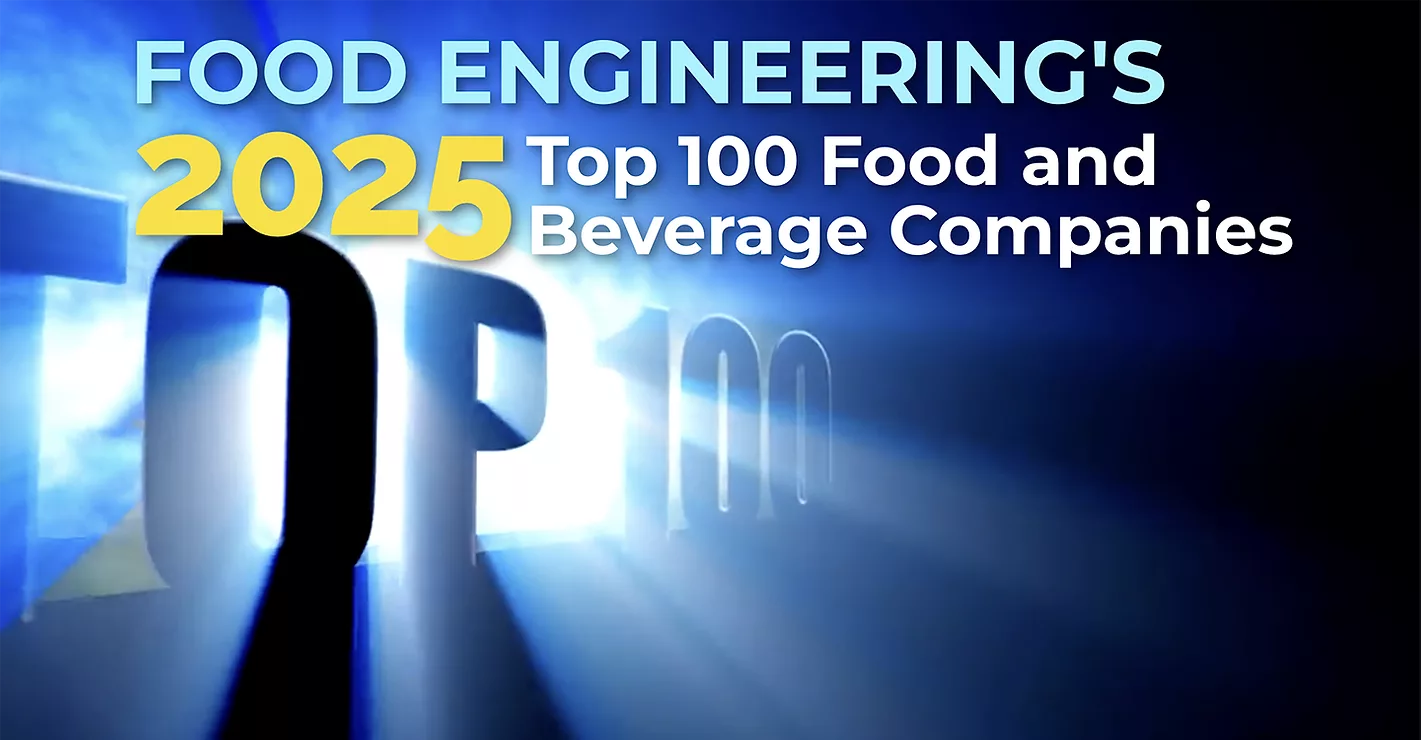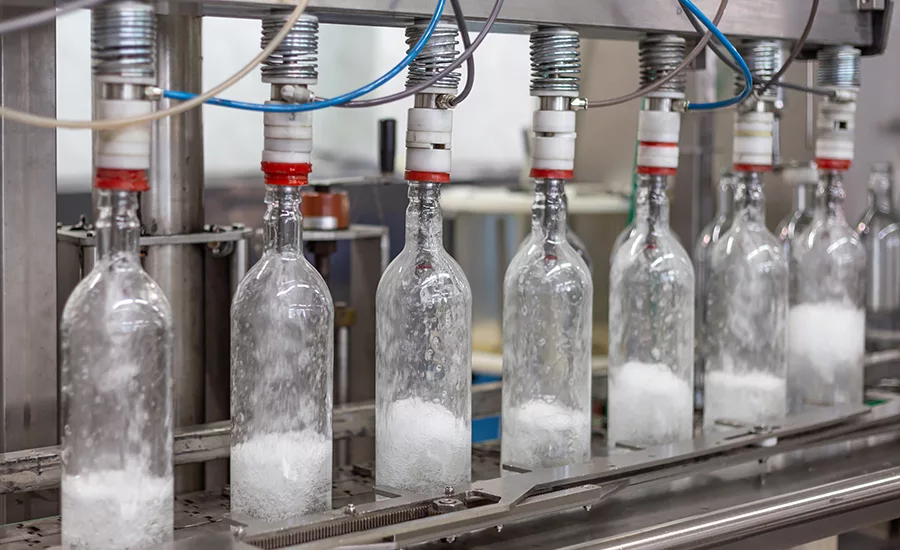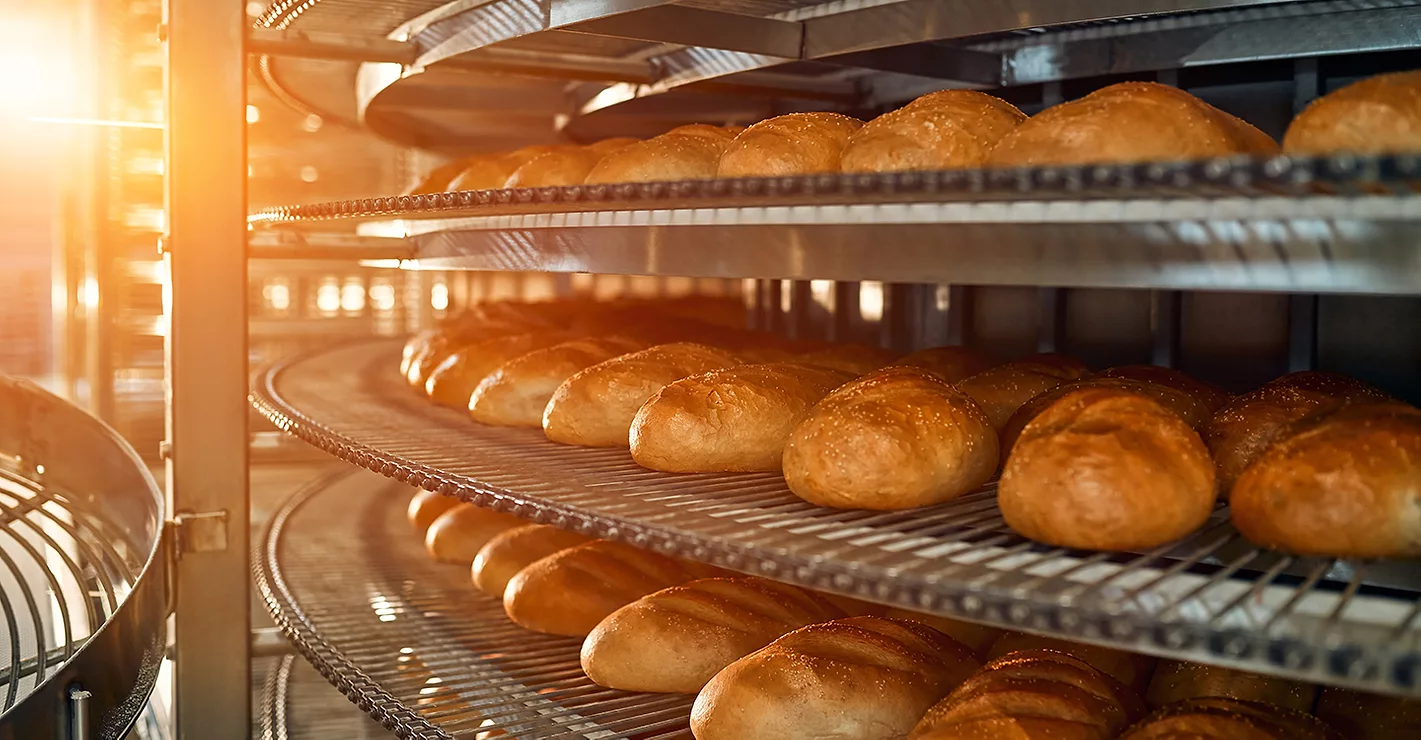Anaerobic gas and cash
Soaring energy prices and the greening of corporate America couldn’t have come at a better time for mobilized film technology for wastewater.

The technology graveyard is littered with great solutions to food processing challenges that never found their right time and place. Every now and then, though, a technology clicks, keeping the dream of fortune (if not fame) alive. Such is the case with mobilized film technology (MFT) and the renewable energy it delivers.Scientists at Cornell University began working on an anaerobic system for fluid waste in the 1970s, but a patent issued in 1980 lapsed before a successful commercial application was launched. Robert J. Cummings was part of the development team before leaving Cornell in 1993. Two years later, he achieved a breakthrough in integrating a fluidized bed in the design to make the system practical on a commercial scale. Over the next decade, Anaerobics Inc. slowly developed the core technology and began building wastewater treatment facilities. By 2005, the firm had revenues of $5 million and had been renamed Ecovation Inc. Last year, it had sales of $50 million, which will more than double in 2008. Ecolab Inc. announced on February 4 an agreement to buy Ecovation for $210 million.
Soaring energy prices have helped Ecovation, which typically builds and operates its treatment plants, selling the harvested methane back to the manufacturer supplying the wastewater. The arrangement relieves the manufacturer of capital investment and addresses discharge issues while bolstering sustainability claims. A project begun in fall 2006 at the North Lawrence (NY) Dairy resulted in a 2007 Environmental Excellence Award for Ecovation and Breyers Yogurt from the New York State Department of Environmental Conservation. The system is Ecovation’s most advanced, removing 90% of BOD from wastewater and generating enough boiler gas to meet a third of the production facility’s daily demand. The gas costs less and replaces almost 250,000 gallons of No. 6 fuel oil, slashing sulfur dioxide emissions by a third.
Ecovation has built larger facilities since then, with each design improving on the systems that preceded it. Helping guide the continuous improvement effort is Raj Rajan, vice president of engineering since 2004. He is responsible for process engineering, process control systems and engineering integration of technical solutions. A graduate of Southern Illinois University, where he received an MS in environmental engineering, and the University of Massachusetts, where he earned a PhD in civil and environmental engineering, Rajan has designed and executed remediation and waste treatment projects throughout the country.
FE: What distinguishes mobilized film technology?
Rajan: Retention of huge populations of bacteria in the digester is perhaps the biggest distinction. Microbes form biofilms on the surface of fine sand particles that are heavy enough to prevent them from being lifted off by hydraulic flow of effluent. Microorganism density is up to 50 times higher than in conventional systems.
Plug flow is used instead of a mixed system, which is another significant advancement. The hydraulic control correlates upflow velocity of the wastewater to the settling rate of the biomass. There is no short-circuiting of the inflow: We know where every bit of liquid is being dispersed in the system, so there is first in, first out treatment. Maximum organic reduction for complete digestion is accomplished, and we’re able to handle suspended particulate matter.
FE: How much methane is generated?
Rajan: For every pound of material that can be chemically oxidized, 5.61 cubic feet of gas are produced. Plug flow increases methane generation about 15% over conventional anaerobic systems.
FE: For what types of waste streams is MFT best suited?
Rajan: The technology has been applied to cream cheese, cottage cheese, mozzarella, provolone and other cheeses, as well as dried fruit, cranberry juice, orange juice concentrate, energy drinks and waste streams from wineries. It’s ideal for dairy, which is challenging because the high levels of calcium and phosphorous tend to clog up conventional processes. It’s appropriate for any manufacturing that produces a soluble organic waste stream.
We’re not treating typical wastewater: It’s high-strength material, with high concentrations of BOD. And there is chemistry involved in maintaining the right levels of nitrogen phosphate and other organics and maintaining the right temperature. The ideal range is 95°-98°F, which means very little heating is required with food and beverage. The material often comes in very warm, and we have to cool it a little bit.
FE: Why is the system more compact than conventional systems?
Rajan: Because we retain more biomass, the footprint is much smaller. And gas flux results in much higher amounts of gas per square foot, which helps in the vertical design. The CoolBrands installation in North Lawrence is tucked in a little corner of unusable land. It is 25-ft. high, 21-ft. wide and 60-ft. long. Other anaerobic systems of comparable scale would require three times the area, and a lagoon system would require acres.
FE: How has the design changed in the last decade?
Rajan: With every new plant we build, we learn something to make the next one better. The first generation had many nozzles and mechanically actuated valves to bring incoming waste into the bottom of the reactor. Now we’re building systems that are 20 times larger and have a third as many nozzles on a per-unit processed basis. That means there’s a lot less stainless steel piping, which dramatically lowers cost. The cost of instrumentation and controls goes down with each project, as well. Each plant is designed in a modular fashion, with PLC controls that let us access all the plants from our headquarters in Victor, NY.
Green is good, but the other green is better when the operating costs go down. We’re constantly improving our engineering to make each system cheaper to build and to maintain.
FE: How much manpower is needed?
Rajan: There are cases where there are too many processes to run the system with one operator, but typically we run 24/7 with one operator on site and alarms if a disruption occurs. Early on, we processed 20,000-30,000 lbs. of BOD a day. The latest plant processes 185,000 lbs. of organic load a day, and there’s still only one operator.
Dairies typically have up to three CIP cycles a day. We learned from experience what type of instrumentation we need to detect and divert a spike in water with sanitation chemicals, eventually building controls that don’t even require the operator to react to those events.
 FE: Does a processing shutdown pose a danger to the reactor’s
bacteria?
FE: Does a processing shutdown pose a danger to the reactor’s
bacteria?
Rajan: After millions of years of evolution, anaerobic bacteria have become very good at hibernating. They are very slow growing and very slow dying. In a previous position, my company built an anaerobic system to handle de-icing fluids used on planes. Even in upstate New York, plane de-icing only occurs October to May. The bacteria had no problem surviving during the five months when no storm water was entering the system.
FE: How many Ecovation reactors have you built?
Rajan: There are 16, a dozen operating and the rest under construction. The infrastructure in place with the modular design simplifies reactor expansion. One installation has eight reactors. The CoolBrands system has two.
CoolBrands represents a very mature, state-of-the-art system. The improvements we’ve made since are insignificant. CoolBrands is removing 32,000 lbs. of BODs from wastewater a day and generating 150 million BTUs of fuel a day. An existing oil boiler was converted to dual-fuel. After some drying and hydrogen-sulfide removal, methane from the system is able to meet more than 30% of the boiler’s thermal load. North Lawrence is north of the Adirondacks, where No. 6 oil is trucked in to meet energy needs. Heating oil is becoming very costly, which makes this solution even more attractive.

Raj Rajan, vice president, engineering, Ecovation Inc., Victor, NY. Source: Ecovation Inc.
The technology graveyard is littered with great solutions to food processing challenges that never found their right time and place. Every now and then, though, a technology clicks, keeping the dream of fortune (if not fame) alive. Such is the case with mobilized film technology (MFT) and the renewable energy it delivers.Scientists at Cornell University began working on an anaerobic system for fluid waste in the 1970s, but a patent issued in 1980 lapsed before a successful commercial application was launched. Robert J. Cummings was part of the development team before leaving Cornell in 1993. Two years later, he achieved a breakthrough in integrating a fluidized bed in the design to make the system practical on a commercial scale. Over the next decade, Anaerobics Inc. slowly developed the core technology and began building wastewater treatment facilities. By 2005, the firm had revenues of $5 million and had been renamed Ecovation Inc. Last year, it had sales of $50 million, which will more than double in 2008. Ecolab Inc. announced on February 4 an agreement to buy Ecovation for $210 million.
Soaring energy prices have helped Ecovation, which typically builds and operates its treatment plants, selling the harvested methane back to the manufacturer supplying the wastewater. The arrangement relieves the manufacturer of capital investment and addresses discharge issues while bolstering sustainability claims. A project begun in fall 2006 at the North Lawrence (NY) Dairy resulted in a 2007 Environmental Excellence Award for Ecovation and Breyers Yogurt from the New York State Department of Environmental Conservation. The system is Ecovation’s most advanced, removing 90% of BOD from wastewater and generating enough boiler gas to meet a third of the production facility’s daily demand. The gas costs less and replaces almost 250,000 gallons of No. 6 fuel oil, slashing sulfur dioxide emissions by a third.
Ecovation has built larger facilities since then, with each design improving on the systems that preceded it. Helping guide the continuous improvement effort is Raj Rajan, vice president of engineering since 2004. He is responsible for process engineering, process control systems and engineering integration of technical solutions. A graduate of Southern Illinois University, where he received an MS in environmental engineering, and the University of Massachusetts, where he earned a PhD in civil and environmental engineering, Rajan has designed and executed remediation and waste treatment projects throughout the country.
FE: What distinguishes mobilized film technology?
Rajan: Retention of huge populations of bacteria in the digester is perhaps the biggest distinction. Microbes form biofilms on the surface of fine sand particles that are heavy enough to prevent them from being lifted off by hydraulic flow of effluent. Microorganism density is up to 50 times higher than in conventional systems.
Plug flow is used instead of a mixed system, which is another significant advancement. The hydraulic control correlates upflow velocity of the wastewater to the settling rate of the biomass. There is no short-circuiting of the inflow: We know where every bit of liquid is being dispersed in the system, so there is first in, first out treatment. Maximum organic reduction for complete digestion is accomplished, and we’re able to handle suspended particulate matter.
FE: How much methane is generated?
Rajan: For every pound of material that can be chemically oxidized, 5.61 cubic feet of gas are produced. Plug flow increases methane generation about 15% over conventional anaerobic systems.
FE: For what types of waste streams is MFT best suited?
Rajan: The technology has been applied to cream cheese, cottage cheese, mozzarella, provolone and other cheeses, as well as dried fruit, cranberry juice, orange juice concentrate, energy drinks and waste streams from wineries. It’s ideal for dairy, which is challenging because the high levels of calcium and phosphorous tend to clog up conventional processes. It’s appropriate for any manufacturing that produces a soluble organic waste stream.
We’re not treating typical wastewater: It’s high-strength material, with high concentrations of BOD. And there is chemistry involved in maintaining the right levels of nitrogen phosphate and other organics and maintaining the right temperature. The ideal range is 95°-98°F, which means very little heating is required with food and beverage. The material often comes in very warm, and we have to cool it a little bit.
FE: Why is the system more compact than conventional systems?
Rajan: Because we retain more biomass, the footprint is much smaller. And gas flux results in much higher amounts of gas per square foot, which helps in the vertical design. The CoolBrands installation in North Lawrence is tucked in a little corner of unusable land. It is 25-ft. high, 21-ft. wide and 60-ft. long. Other anaerobic systems of comparable scale would require three times the area, and a lagoon system would require acres.
FE: How has the design changed in the last decade?
Rajan: With every new plant we build, we learn something to make the next one better. The first generation had many nozzles and mechanically actuated valves to bring incoming waste into the bottom of the reactor. Now we’re building systems that are 20 times larger and have a third as many nozzles on a per-unit processed basis. That means there’s a lot less stainless steel piping, which dramatically lowers cost. The cost of instrumentation and controls goes down with each project, as well. Each plant is designed in a modular fashion, with PLC controls that let us access all the plants from our headquarters in Victor, NY.
Green is good, but the other green is better when the operating costs go down. We’re constantly improving our engineering to make each system cheaper to build and to maintain.
FE: How much manpower is needed?
Rajan: There are cases where there are too many processes to run the system with one operator, but typically we run 24/7 with one operator on site and alarms if a disruption occurs. Early on, we processed 20,000-30,000 lbs. of BOD a day. The latest plant processes 185,000 lbs. of organic load a day, and there’s still only one operator.
Dairies typically have up to three CIP cycles a day. We learned from experience what type of instrumentation we need to detect and divert a spike in water with sanitation chemicals, eventually building controls that don’t even require the operator to react to those events.

The design of an MFT anaerobic digester ensures first in, first out treatment of waste streams, with high BOD reductions and the capture of methane. Recirculation and retention of digester microbes are key efficiencies. Source: Ecovation Inc.
Rajan: After millions of years of evolution, anaerobic bacteria have become very good at hibernating. They are very slow growing and very slow dying. In a previous position, my company built an anaerobic system to handle de-icing fluids used on planes. Even in upstate New York, plane de-icing only occurs October to May. The bacteria had no problem surviving during the five months when no storm water was entering the system.
FE: How many Ecovation reactors have you built?
Rajan: There are 16, a dozen operating and the rest under construction. The infrastructure in place with the modular design simplifies reactor expansion. One installation has eight reactors. The CoolBrands system has two.
CoolBrands represents a very mature, state-of-the-art system. The improvements we’ve made since are insignificant. CoolBrands is removing 32,000 lbs. of BODs from wastewater a day and generating 150 million BTUs of fuel a day. An existing oil boiler was converted to dual-fuel. After some drying and hydrogen-sulfide removal, methane from the system is able to meet more than 30% of the boiler’s thermal load. North Lawrence is north of the Adirondacks, where No. 6 oil is trucked in to meet energy needs. Heating oil is becoming very costly, which makes this solution even more attractive.
Looking for a reprint of this article?
From high-res PDFs to custom plaques, order your copy today!





